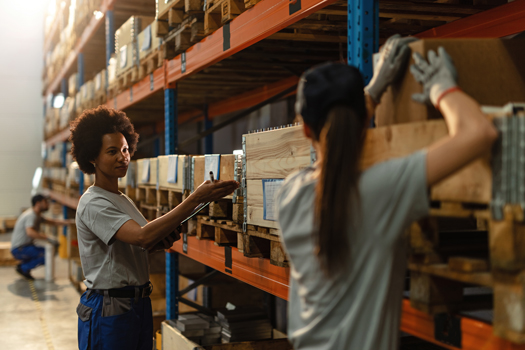Kitting and Assembly
The Art and Science of Kitting and Assembly: Streamlining Production Processes
Kitting and assembly play pivotal roles in modern manufacturing, offering efficient solutions to enhance productivity and streamline production processes. Kitting involves the gathering and packaging of individual components or parts required for a specific task, while assembly refers to the process of putting these components together to create a finished product. Both practices are integral to achieving lean manufacturing and are employed across various industries to optimize efficiency and reduce operational costs.

Kitting:
Definition and Purpose: Kitting is the process of assembling and packaging individual components or materials required for a specific task, operation, or project. The goal is to simplify the workflow by pre-organizing items needed for a particular job, minimizing downtime and reducing the risk of errors during assembly.
Benefits of Kitting:
- Efficiency: Kitting ensures that all necessary components are readily available, reducing the time spent searching for parts.
- Inventory Management: It helps in maintaining an organized inventory, enabling better control and reducing the risk of stockouts.
- Error Reduction: By pre-assembling kits, the likelihood of errors during the assembly process is significantly diminished.
- Cost Savings: Streamlining the process and minimizing downtime lead to cost savings in both time and labor.
Kitting Process:
- Identifying Components: Determine the components needed for a specific task or product.
- Gathering Components: Collect and organize the required materials in a kit.
- Packaging: Package the components in a way that is convenient for the assembly process.
- Labeling: Clearly label each kit to facilitate easy identification.
Assembly:
Definition and Purpose: Assembly is the process of putting together individual components or parts to create a finished product. It involves a series of steps and often requires skilled labor and precision to ensure the final product meets quality standards.
Benefits of Assembly:
- Quality Control: Assembly allows for meticulous inspection of each step, ensuring the final product meets quality standards.
- Customization: Products can be assembled to meet specific customer requirements or varying market demands.
- Scalability: Assembly lines can be scaled to accommodate increased production needs efficiently.
- Consistency: Standardized assembly processes lead to consistent and predictable outcomes.
- Assembly Process:
- Preparation: Ensure all components are available and in the correct quantities.
- Assembly Line Setup: Organize the assembly line to optimize efficiency and minimize bottlenecks.
- Actual Assembly: Skilled workers or automated systems assemble components to create the final product.
- Quality Control: Implement checks at various stages to maintain product quality.
- Packaging: Once assembled, products are packaged and prepared for distribution.
Integration of Kitting and Assembly:
-
Optimizing Workflows: Kitting and assembly are often integrated to create a seamless production workflow. Kits prepared in the kitting phase are used in the assembly process, reducing delays and enhancing overall efficiency.
-
Technology Integration: The integration of technology, such as barcode scanning and RFID systems, can further streamline kitting and assembly processes, improving accuracy and reducing the chance of errors.
-
Continuous Improvement: Regularly evaluating and optimizing kitting and assembly processes is essential for achieving continuous improvement. Lean manufacturing principles, such as the elimination of waste and reduction of lead times, are integral to this ongoing refinement.
Conclusion:
Kitting and assembly are vital components of modern manufacturing, offering efficient solutions to enhance productivity and streamline production processes. By carefully organizing and assembling components, manufacturers can achieve cost savings, improve product quality, and respond more effectively to changing market demands. The integration of technology and a commitment to continuous improvement further contribute to the success of kitting and assembly processes in today’s competitive manufacturing landscape.
How to Save On Shipping
“Yes, consolidating multiple items into a single package can often result in significant cost savings when shipping oversized or lightweight items, particularly when DIM weight pricing is used to calculate shipping charges”
Our knowledgeable staff will assist you in identifying areas where shipping costs might be reduced. If, for example, each of the five items is packaged separately and the order is broken up into five separate shipments, we would combine the shipments and ship them in a single box. We can fit all of them inside a single box made for that purpose. When you reduce the amount of cardboard used to box your purchase, you not only save money on packaging materials but also on shipping costs. Shipping expenses can be reduced significantly using kitting.
Certainly, when shipping many lightweight or big items, merging them into a single package can often result in significant cost savings, especially when DIM weight pricing is employed to compute shipping expenses.
For determining shipping costs, DIM weight pricing considers both the package’s weight and its volume; in some situations, the volume of a package will result in a greater shipping cost than the box’s actual weight. If you have multiple items that are either too large or too light, shipping them all separately may end up costing more than you expected.
Shipping costs can be reduced due to a lower DIM weight when many items are combined into a single package, which is typically possible. This tactic can help companies save money on shipping costs and boost profits, especially if they regularly send bulky or light commodities.
It’s important to remember, though, that bundling everything together might not always be the best option. The shipping carrier may have size or weight constraints that must be considered, as well as the fragility of the objects being delivered. In addition, you must take extra precautions to ensure that your combined shipment arrives in one piece.
Request a Qoute
Reach Us
Please do not hesitate to contact us.
11555 Gaston Rd, Bldg H ,
Katy, Tx 77494
